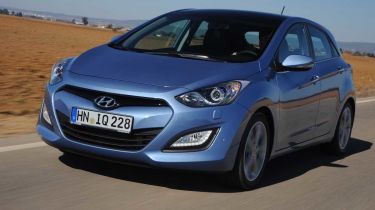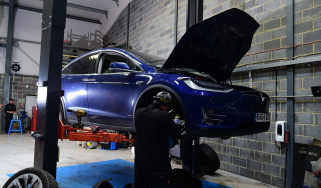Hyundai i30
Is the all-new Hyundai i30 a genuine rival for the Ford Focus and VW Golf? We drive it to find out

The all-new Hyundai i30 isn’t the best car in this class – although the margins are extremely fine – but it certainly looks like it offers the best value for money. Avoid the automatic if you can, and you’ll be buying a great all-rounder.
The Hyundai i30 was released in 2007 and sold well because it was cheaper than other compact hatchbacks such as the VW Golf and Ford Focus, not because it was as good as them. Now there’s a new i30, and, just like before, it’s cheaper, but this time it’s promising to be just as capable as established rivals.
While the old i30 didn’t create much of an impression in the flesh, the new car is a real head-turner. The headlights are intricately detailed, there’s a pair of smart LED daytime running lights and bold curves run down the flanks.
Inside, the hard plastics found in the first i30 have made way for a premium interior trimmed with soft-touch plastics on the dashboard and door panels. Gloss black details and brushed silver inserts add a touch of class that shifts the i30 ever closer to the kind of interiors we expect from the VW Golf.
And the driving experience is almost on a par, too. Refinement has clearly been improved, with the 1.6-litre diesel in our model proving to be immensely quiet and rattle-free at low revs.
Used - available now
Our first complaint though, comes with the power delivery of the 126bhp 1.6 CRDi engine. While most diesels can create the illusion of fast acceleration with a punchy mid-range, this unit doesn't quite have that punch – despite the 10.9 second 0-62mph time. The optional six-speed automatic worsens this problem but provides smooth and hassle-free progress.
But that's not the only reason you should opt for the manual over the automatic gearbox. The manual-equipped 109bhp and 126bhp diesels are both congestion charge and road tax exempt, thanks to CO2 emissions of 100g/km. The six-speed automatic – which is only available with the 109bhp engine –emits 145g/km. It shows in the fuel economy figures, too, which worsen from an incredible 74.3mpg to an average-for-the-class 51.4mpg.
On the plus side, the i30 doesn’t do much else wrong. The ride is comfortable, the cabin is spacious for tall passengers, the boot is big enough for their bags and the handling is good – although not exactly thrilling. That’s despite Hyundai's new Flex Steer system being fitted to our car, which allows drivers to switch between Comfort, Normal and Dynamic modes. The latter simply adds more weight, but not really any more feedback.
So the Hyundai i30 is closer than ever in performance to cars like the Golf and Focus, and it's getting close on price, too. Our fully-specced 1.6 CRDi Style Nav model costs £20,295, while a 1.6 TDI Golf Match costs £20,305. The equipment lists are virtually identical too, but the i30 offers sat-nav, a reversing camera and automatic climate control as standard.











